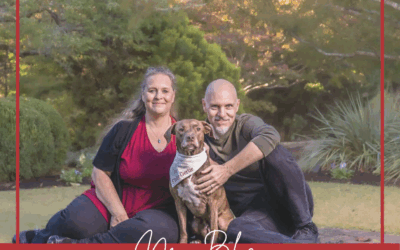If you have a new dog and are online, you’ve no doubt come across the 3-3-3 rule for new dogs. This idea and various graphics of it circulate often, making the rounds on social media. I am unsure of the origin of this rule, but I suspect it started in the rescue world, intended to encourage new adopters to have patience and understanding with their newly adopted dogs, since adopters sometimes have unreasonable expectations. Instead of this, I wish truly helpful information, like the importance of understanding dog communication and body language were in the forefront.
If you haven’t heard about it, the 3-3-3 “rule” suggests new dogs, particularly rescue dogs, take 3 days to decompress and adjust to their new surroundings, 3 weeks for them learn the routine, start bonding and for the dog being ready to start training and then 3 months for them to feel entirely comfortable, relaxed and ready for continued socialization and advanced training.
Dogs do need time to decompress but there is no specific timeline that we can put on this. People naturally want to rush things because they’re excited about their new family member but taking time to learn essential things like understanding body language, dog communication and moving at the dog’s pace are the important thing to focus on. Rescues and shelter need to do a better job at setting realistic expectations about what this new dog may be like and helping people understand the dog may have been through a lot to get where they are. The 3-day part of this rule may stem from our understanding that a dog’s stress hormones can take up to 72 hours to return to normal, assuming there’s no additional stressful triggers in that time that contributes to trigger stacking.
So many things will play a part in helping to new dog adjust to their new surroundings, including understanding how to meet a dog for the first time, how to introduce a new dog to an existing dog and how to introduce a new dog to new people, once they’re comfortable with your immediate family.
Some dogs will very quickly settle in, some almost immediately, like my own Mr. Barbo, who was playing and rolling over and completely comfortable within moments of coming home. And then there’s others that take many, many months, and in the most severe cases, some dogs may never fully be truly comfortable. I have had several training clients that took 8-12 months before they could even go outside! By positioning the 3-3-3 rule as some standard template that all dogs follow, does a disservice by not helping guardians understand their dog and what that individual really needs. If you’ve tried to follow this rule, it’s not your fault! Much of the information given online or even from friends or family, is well-meaning but misguided. Professional licensure is not required to call yourself a dog trainer in the US, so there is a lot of incorrect information out there, even from those calling themselves professional trainers.
And I know you’re only looking for ways to help your dog, to stop their suffering and reduce your anxiety about it. Whether your dog is struggling with house training, crate training, stranger danger, fear of outside, separation anxiety, resource guarding, general fear, or other behavioral issues, it can be exhausting and difficult to know what the right advice to follow is. And you’re likely looking for anything that might help. So, a quick little graphic pushing 3 days, 3 weeks and 3 months saying you just need to give your dog time to be well-adjusted makes everything sound so easy!
I wish it was this easy. While this rule may be a general guideline and for some dogs anecdotally may seem accurate, this rule is an example of well-intentioned but misguided advice. And, I think it does more harm than good.
Why? What’s the harm?
- Sets unreasonable expectations. What damage is done to that relationship between dog and human if a dog doesn’t follow this timeline? Will the guardian think there is something wrong with their dog? And, people may inadvertently make things worse by trying to force the dog to do things they think the dog should be doing. Well intentioned people may force/strongly encourage a dog to do something they’re not ready for and make their issues worse and damage the trust that needs to be laid as a foundation that their guardian is safe.
- Bonding starts in the first interaction. Relationship and trust building all starts from the first moment you interact with the dog and continues for life. That is why knowing how to meet a dog for the first time is so important.
- This suggested timeline is completely arbitrary. Many dogs will not follow the timeline of this rule, because there is no evidence that this rule is based on any science or research. Progress takes as long as it takes. Some dogs will go more quickly while others will go more slowly. I’ve talked about this topic before, when people ask “how long will it take to “fix” this problem?”
- Delays people seeking professional help. What if the guardian wait until this timeline is over before they recognize that their dog needs professional help, essentially having waited 3 months before seeking help and possibly making the issues worse? Even with fearful dogs, we should see a gradual trend in warming up, being more curious/brave, engaging and feeling safe. If you’re not seeing a trend in this direction, even small improvements, after a few days, it’s time to get professional help. Your toothache won’t magically go away without dental care, just like your dog’s behavioral or fear issues won’t magically go away without professional guidance.
- Waiting isn’t training. Similar to people who advise that fearful dogs “just need love” (without actually understanding what it means to love a fearful dog), just advising people wait and give the dog “some time” isn’t helpful behavior advice. Time doesn’t magically solve behavior problems. And waiting without taking action can make the dog’s behavior worse.
- Doesn’t account for the dog’s pace. This is possibly the most important part of dog training and this timeline overlooks it entirely and assumes all dogs are going to move at the same pace.
My hope is that this rule stops circulating and people seek out qualified, professional help for their dogs, instead of hoping some arbitrary social media post, or unqualified advice from people will somehow be a replacement for one-on-one professional training that so many dogs need, even early on in their journey, before the dog has rehearsed unwanted behaviors for months and months or lived with fear issues impacting their quality of life.
When you have a new dog it much more important to not put an arbitrary timeline on things and instead:
- Build trust by never forcing the dog to do anything they don’t want to do
- Go at your dog’s pace.
- Learn your dog’s body language and communication.
- Get professional help, earlier, rather than later.
- Celebrate your wins, no matter how small they are.
- Always use only force-free training methods.
And if you’re unsure of how to locate a qualified trainer or what all those letters mean, read my post Understanding Dog Profession Titles here for more detail on credentials. You can also schedule a session with me one-one-one or look at my budget-conscious self-paced courses for dogs needing help with separation anxiety, fear of outside or preparing for a new baby.
Happy training!
![]()




